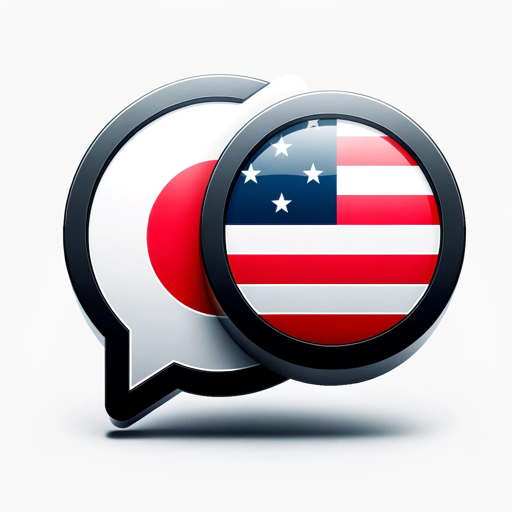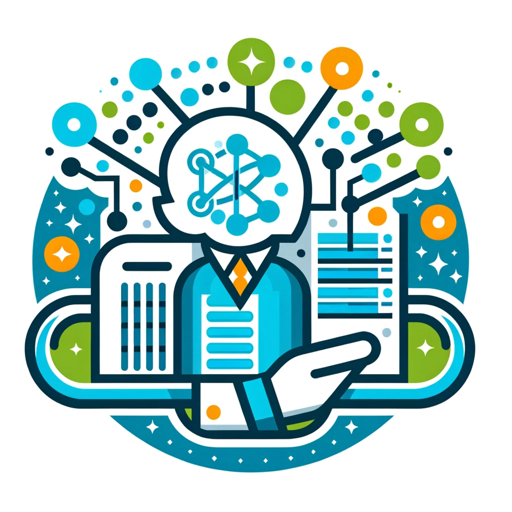日英・英日翻訳GPT-AI-powered English-Japanese translator.
AI-powered translation for English and Japanese.
日本語を英語に翻訳してください。
英語を日本語に翻訳してください。
この日本語の文を英語で教えてください。
この英語の文を日本語に訳してください。
Related Tools
Load More
日本語 GPT
ChatGPT4 公式日本語版

日↔英 翻訳機
Simple and high-performance English-Japanese bidirectional translator
和英翻訳GPT
アカデミックな日本語文章を英訳します。文章のトピックや専門領域を伝えることでよりコンテキストが正確になります。長い文章は500-800文字程度に分けて入れてください。ChatGPT独特な表現は避けるように調整してあります。

00コピペ英文和訳・和文英訳
文章をコピペしてください。AIが自動判別して、英文は和訳し、和文は英訳します。

和訳GPT
全文を一言一句日本語に翻訳してくれるGPTs (生成エラー対策として”生成を続ける”は使わず、手動でcontinueなどと入力することをお勧めします)

English Email
Translates Japanese text into English accurately.
20.0 / 5 (200 votes)
Introduction to 日英・英日翻訳GPT
日英・英日翻訳GPT is designed to facilitate seamless communication between Japanese and English speakers by automatically detecting the input language and translating it into the target language. The main purpose of this GPT is to bridge the language gap, making it easier for users to understand and convey messages accurately. For example, if a user inputs an English sentence like 'What is the capital of Japan?', 日英・英日翻訳GPT will detect the language as English and provide the Japanese translation '日本の首都はどこですか?'. Conversely, if the input is Japanese, such as '日本の首都はどこですか?', the GPT will translate it to 'What is the capital of Japan?'.

Main Functions of 日英・英日翻訳GPT
Language Detection
Example
Automatically identifying whether the input text is in English or Japanese.
Scenario
A user inputs 'Hello, how are you?' and the system detects it as English, then prepares to translate it into Japanese.
Translation
Example
Translating English text to Japanese and Japanese text to English.
Scenario
A user inputs 'お元気ですか?', and the system translates it to 'How are you?'.
Contextual Understanding
Example
Providing accurate translations that consider the context and nuances of the source language.
Scenario
A user inputs 'I have a bank account in Japan.' The system accurately translates it to '私は日本に銀行口座を持っています。' considering the specific context of the sentence.
Ideal Users of 日英・英日翻訳GPT Services
Business Professionals
Business professionals engaging in international trade or communication between English-speaking and Japanese-speaking clients or colleagues. They benefit from accurate translations in emails, documents, and meetings, ensuring clear and professional exchanges.
Travelers and Tourists
English-speaking tourists visiting Japan or Japanese tourists visiting English-speaking countries can use the service to navigate through their travels, communicate with locals, and understand signs and menus, enhancing their travel experience.

How to Use 日英・英日翻訳GPT
1
Visit aichatonline.org for a free trial without login, also no need for ChatGPT Plus.
2
Input your text in English or Japanese directly into the text box provided. The tool automatically detects the language.
3
Click on the 'Translate' button to convert the text from English to Japanese or vice versa. The translation will appear in the output box.
4
Review the translated text for accuracy. You can refine the original input to get a more precise translation, especially for complex or nuanced phrases.
5
Utilize the translated content in your academic, professional, or personal projects as needed. Make sure to copy and save your translations, as the tool does not store past translations.
Try other advanced and practical GPTs
Gecko Tech Image Replicator
AI-Powered Image Replication Made Easy

Speech Coach 2
Enhance Your Speaking with AI

Revit API Expert
AI-powered Revit API guidance for developers.

Detector de IA
AI-Powered Content Authenticity Checker

NodeJS Mentor
AI-powered Node.js development mentor

UFO Historian
Explore UFO history with AI insights.

Network Buddy - ACI
AI-powered Cisco ACI management.

Clinical Trials Expert
AI-powered clinical trial information

Bricksforge
AI-powered enhancements for Bricks Builder

CompTIA Security+ Exam Prep Pro
AI-powered CompTIA Security+ exam prep

Mejorar mi Comunicación
AI-powered tool for perfecting your writing

Aprendizaje de Inglés Británico y Traducción
AI-powered British English & Translation Tool

- Academic Writing
- Language Learning
- Business Communication
- Web Content
- Personal Correspondence
Detailed Q&A about 日英・英日翻訳GPT
How accurate are the translations provided by 日英・英日翻訳GPT?
The translations are highly accurate, especially for general and business language. However, for highly specialized or technical content, some adjustments may be needed to ensure precision. Reviewing the output for context-specific nuances is recommended.
Can 日英・英日翻訳GPT handle slang or idiomatic expressions?
Yes, the tool is capable of understanding and translating many common slang terms and idiomatic expressions. However, some very localized or obscure expressions might not be perfectly translated, and additional context may be required for accuracy.
Is there a word limit for translations?
There is no strict word limit, but for best performance, it's recommended to input text in smaller segments, especially if the content is long or complex. This helps to ensure that the translations are as accurate as possible.
Is it possible to translate both directions (English to Japanese and Japanese to English)?
Yes, 日英・英日翻訳GPT supports bidirectional translation. It automatically detects the input language and translates it to the opposite language, ensuring a seamless user experience.
What are some common use cases for 日英・英日翻訳GPT?
Common use cases include translating business emails, academic papers, web content, personal communication, and understanding foreign-language materials. It's also useful for learning and improving language skills.